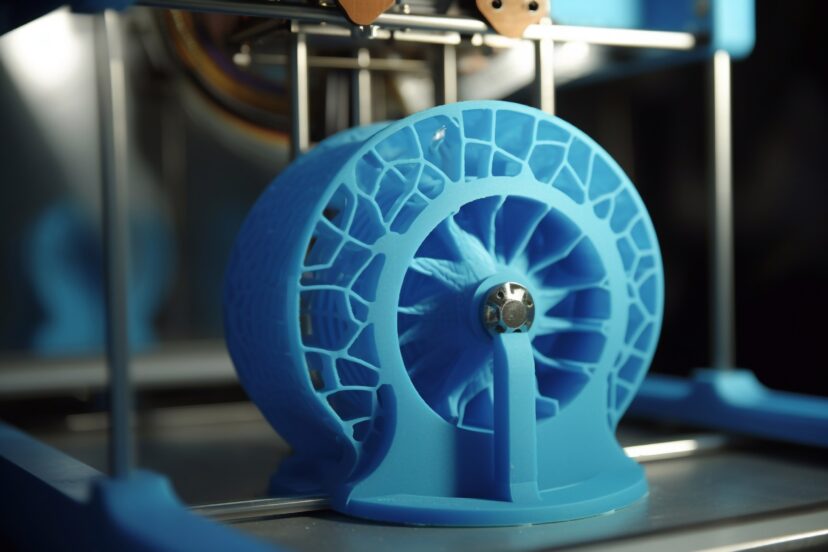Empower Your Imagination: What Can You Make with a 3D Printer? 40 Creative Ideas!
Introduction
Hey there, fellow enthusiasts! If you’ve ever wondered what wonders a 3D printer can bring to your life, you’re in for a treat. As an avid 3D printing advisor, I’ll take you on a journey to explore the incredible power of a 3D printer and inspire you with 40 diverse ideas to bring your imagination to life. Buckle up, and let’s embark on this creative expedition!
What is a 3D Printer?
Before we dive into the fascinating world of 3D printing, let’s briefly understand what a 3D printer is. In simple terms, a 3D printer is a revolutionary device that can create three-dimensional objects from digital files. It does so by adding successive layers of material until the object takes shape, making it an ideal tool for various industries and hobbyists alike.
Understanding the Power of a 3D Printer
The power of 3D printing lies in its versatility and accessibility. Gone are the days when manufacturing complex objects was confined to industrial setups. With a 3D printer, the possibilities are limitless, and creativity knows no bounds. Let’s explore some of the remarkable advantages of 3D printing:
Unmatched Customization
3D printing empowers you to personalize designs, catering to your specific needs and preferences. From personalized phone cases to unique home decor items, the sky’s the limit!
Rapid Prototyping
Aspiring entrepreneurs and engineers benefit greatly from 3D printing’s ability to quickly produce prototypes. Test your ideas, refine designs, and save valuable time in the product development process.
Economical Manufacturing
Traditional manufacturing often involves significant upfront costs. 3D printing offers cost-effective solutions, particularly for low-volume production runs.
Sustainability
With the world moving towards eco-friendliness, 3D printing stands out as a sustainable manufacturing option, minimizing waste and reducing carbon footprint.
Education and Innovation
3D printers are invaluable tools in educational settings. They foster creativity, problem-solving skills, and encourage innovation among students.
Different Types of 3D Printing Technologies

3D printing, a cornerstone of modern manufacturing and prototyping, comes in various forms. Each technology offers unique advantages and limitations, making them suitable for different applications. Here, we’ll explore three primary types: Fused Deposition Modeling (FDM), Stereolithography (SLA), and Selective Laser Sintering (SLS), and provide a comparison to guide you in selecting the right technology for your needs.
Fused Deposition Modeling (FDM)
- How FDM Works:
- FDM printers create objects layer by layer by melting and extruding thermoplastic filament.
- The print head moves along specified coordinates, depositing the material which cools and solidifies.
- Common Uses:
- Ideal for prototyping, hobbyist projects, and basic parts.
- Widely used in education due to its simplicity and safety.
- Benefits:
- Cost-Effectiveness: FDM printers are generally more affordable, making them accessible for personal use and small businesses.
- Ease of Use: User-friendly, with a straightforward printing process and minimal setup.
- Limitations:
- Resolution: Lower resolution compared to other technologies, which might affect the detail of prints.
- Strength of Prints: Parts may be less durable due to the nature of layer adhesion.
Stereolithography (SLA)
- Overview of SLA Process:
- Uses a laser to cure liquid resin into hardened plastic in a layer-by-layer fashion.
- Known for its precision, capable of producing highly detailed prints.
- Applications:
- Popular in Dental and Jewelry industries for intricate designs.
- Utilized in High-Detail Modeling for prototypes requiring fine details.
- Cost and Materials:
- Higher Cost: SLA printers and materials tend to be more expensive than FDM.
- Use of Resins: Requires specific resins, which can vary based on desired properties like color, strength, and flexibility.
Selective Laser Sintering (SLS)
- SLS Technology:
- SLS uses a laser to sinter powdered material, bonding it together to form a solid structure.
- It can produce parts with complex geometries without the need for support structures.
- Capability:
- Capable of producing Strong and Complex Parts, ideal for functional prototypes and end-use parts.
- Used in industries requiring robust components like aerospace and automotive.
- Cost and Nature:
- High Cost: SLS technology is typically more expensive, often used in industrial settings.
- Industrial Nature: Geared towards professional use due to its complexity and equipment requirements.
Comparison and Guidance
- Cost: FDM is the most cost-effective, while SLA and SLS are higher in cost, suited for professional environments.
- Material: FDM uses thermoplastic filaments; SLA uses resins; SLS utilizes powdered materials.
- Precision: SLA offers the highest detail, followed by SLS, with FDM being the least precise.
- Ideal Use Cases: FDM for basic prototypes and hobbyist projects, SLA for detailed models in dentistry and jewelry, and SLS for strong, functional parts in industrial applications.
- Choosing the Right Technology:
- Assess Your Needs: Consider the level of detail, strength, and budget.
- Application Specific: Choose SLA for high precision, SLS for strength without supports, and FDM for cost-effective, simple projects.
- Material Requirements: Match the material properties with the intended use of the printed object.
Understanding these technologies’ strengths and limitations is crucial in making an informed decision that aligns with your specific 3D printing needs.
40 Ideas to Make with a 3D Printer

3D printing opens a world of creativity and innovation. Here, we’ll explore 20 fantastic ideas that you can bring to life using a 3D printer, along with explanations to help you understand each concept.
1. Home Decor
- Vases and Lampshades: Create unique designs that match your home’s aesthetic.
- Decorative Figurines: Personalize your space with custom-made figurines.
2. Fashion and Accessories
- Jewelry: Design bespoke pieces like rings, necklaces, , earrings and bracelets.
- Belt Buckles and Eyeglass Frames: Stand out with custom-made fashion accessories.
3. Cosplay Props and Costumes
- Create realistic props and costumes for an authentic cosplay experience.
- Ideal for fans of movies, comics, and video games.
4. Educational Tools
- 3D Puzzles and Anatomical Models: Enhance learning through interactive models.
- Historical Replicas: Bring history to life with accurate reproductions.
5. Prototyping and Product Development
- Quickly produce prototypes to test and refine product designs.
6. Pet Accessories
- Custom Tags, Toys, and Feeding Bowls: Create personalized items for your pets.
7. Art and Sculptures
- Craft unique sculptures and art pieces, showcasing intricate details.
8. Mechanical Parts and Repairs
- Print parts for repairs or restore vintage machinery with custom components.
9. Garden and Landscape Decor
- Enhance your outdoor space with 3D printed sculptures, planters, and decorations.
10. Functional Tools and Gadgets
- Create practical items like cable organizers, kitchen gadgets, and smartphone stands.
11. Food and Culinary Creations
- Make custom cookie cutters, cake molds, and unique culinary decorations.
12. 3D Printed Instruments
- Craft unique instrument accessories and customized guitar picks.
13. 3D Printed Toys and Games
- Design and produce toys, board games, and puzzles for all ages.
14. Medical and Prosthetic Devices
- Print prosthetic limbs and assistive devices to aid those in need.
15. Green Solutions
- Develop eco-friendly items like planters, bird feeders, and water-saving gadgets.
16. Customized Phone Cases
- Design personalized phone cases that reflect your style and personality.
17. 3D Printed Gifts
- Impress with personalized and meaningful gifts.
18. Automotive Accessories
- Personalize your vehicle with custom keychains, cup holders, and dashboard mounts.
19. Sports Equipment
- Enhance your sporting experience with customized grips, shin guards, and accessories.
20. DIY Electronics Enclosures
- Protect your DIY electronics with custom enclosures for a sleek, professional look.
22. Office Supplies and Organizers
- Desk Organizers: Create compartments for stationery, documents, and accessories.
- Business Card Holders: Design unique holders that reflect your professional identity.
23. Customized Footwear
- Shoe Soles and Insoles: Tailor-made for comfort and fit.
- Sandals and Flip-Flops: Design your own summer footwear.
24. Personalized Stationery
- Pen Holders and Stands: Print stands in unique shapes and designs.
- Bookmark Designs: Create 3D printed bookmarks with intricate details.
25. Photography Accessories
- Camera Lens Hoods and Caps: Protect your lenses with custom covers.
- Tripod Attachments: Print specialized mounts and accessories for tripods.
26. Aquarium Decor
- Custom Hideouts and Structures: Enhance the aesthetics of your aquarium.
- Aquatic Plants: Print non-toxic, decorative plants for your fish tank.
27. Musical Instrument Accessories
- Guitar Picks and Capos: Personalize your music-making tools.
- Violin Parts: Print chin rests and tuning pegs.
28. Board Game Upgrades
- Custom Dice: Design dice with unique symbols or numbers.
- Game Piece Replacements: Create pieces for your favorite board games.
29. Camping and Outdoor Gear
- Tent Pegs and Accessories: Print lightweight, durable camping essentials.
- Customized Utility Tools: Include multi-purpose tools and gear clips.
30. Party and Event Decorations
- Custom Balloon Holders: Print stands and clips for party balloons.
- Themed Centerpieces: Design centerpieces for weddings, birthdays, and more.
31. DIY Robotics Components
- Gears and Mechanisms: Print parts for homemade robots or mechanical projects.
- Drone Parts: Create custom frames and components for drones.
32. Baby and Toddler Items
- Educational Toys: Safe, non-toxic toys for early learning.
- Customized Sippy Cups: Print cups with handles for easy grip.
33. Travel Accessories
- Luggage Tags: Design unique and easily identifiable tags.
- Portable Utensils: Print collapsible eating tools for on-the-go convenience.
34. Workshop Tools
- Custom Wrenches and Screwdrivers: Tailor tools to specific tasks.
- Tool Holders and Racks: Organize your workshop with printed holders.
35. Model Building
- Architectural Models: Create detailed models for presentations.
- Miniature Landscapes: Print landscapes for model railways or dioramas.
36. Customized Lighting Solutions
- Light Fixtures: Design your own lampshades and light covers.
- LED Holders: Create holders for decorative LED lighting setups.
37. Vehicle Customization
- Motorcycle Parts: Print custom grips, levers, and covers.
- Car Interior Enhancements: Design bespoke knobs, handles, and ornaments.
38. Interactive Art Installations
- Use 3D printing to create dynamic, engaging art pieces for public spaces.
39. Personal Care Items
- Toothbrush Holders: Design holders that can be mounted or placed on surfaces.
- Soap Dishes: Print soap dishes with drainage systems.
40. Custom Puzzles and Brain Teasers
- Design intricate 3D puzzles and mazes for a challenging and fun experience.
Each of these ideas harnesses the versatility of 3D printing, allowing for customization and creativity in various aspects of daily life, from practical solutions to artistic expressions.
3D Printing Software and Design
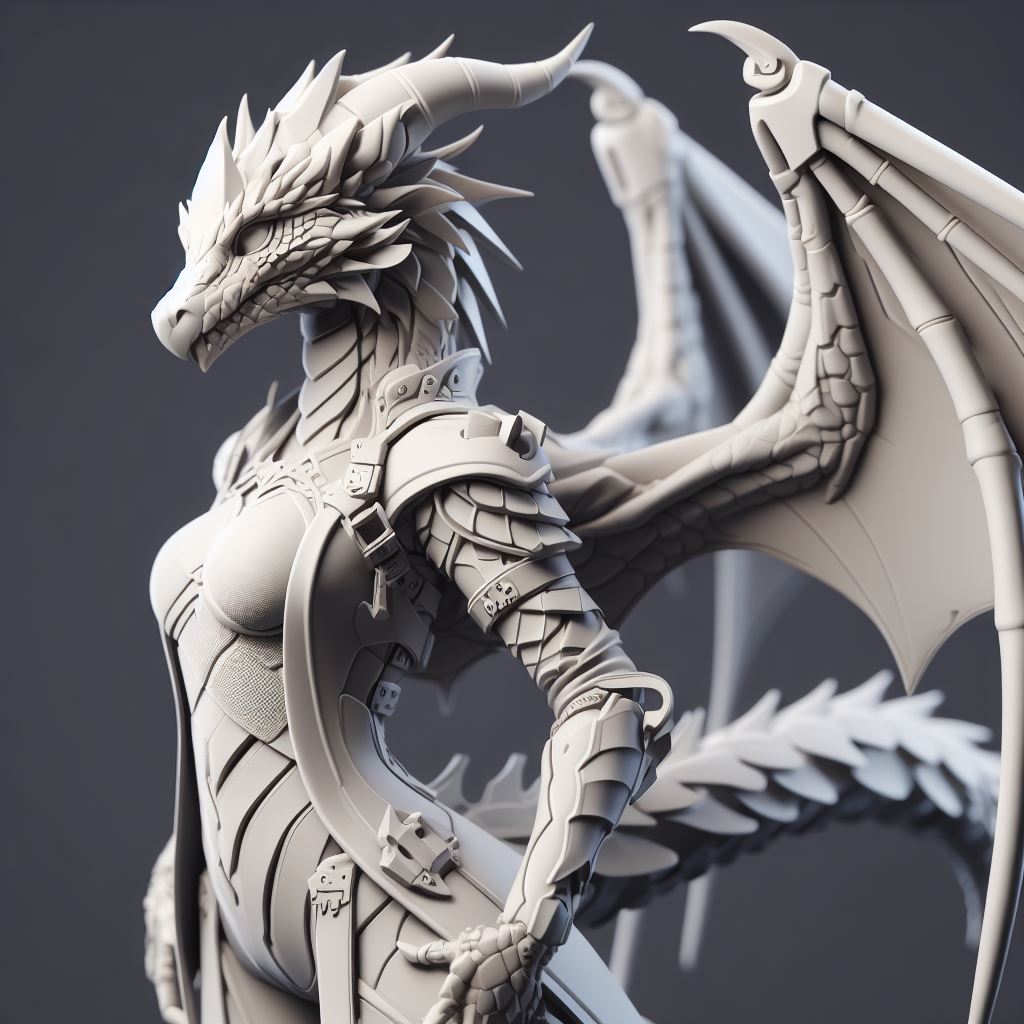
Creating a 3D printed object starts with designing a model using specialized software. This software ranges from beginner-friendly to advanced, catering to various skill levels and needs. Below, we delve into the world of 3D modeling software, guide you through designing your first model, and explain the process of preparing your model for 3D printing.
Introduction to 3D Modeling Software
- Tinkercad (For Beginners):
- Overview: An online 3D design app that is easy to use, perfect for beginners.
- Key Features: User-friendly interface, basic shape collection, and straightforward tools.
- Suitability: Ideal for educational purposes, simple projects, and first-time users.
- Fusion 360 (Intermediate to Advanced Users):
- Overview: A more advanced tool that combines CAD, CAM, and CAE tools in a single platform.
- Key Features: Offers sophisticated design and engineering capabilities, simulation tools, and cloud collaboration.
- Suitability: Suitable for product designers, engineers, and anyone interested in more complex design projects.
- Blender (For Advanced Users):
- Overview: A free and open-source 3D creation suite capable of creating complex models.
- Key Features: Includes features for 3D modeling, animation, rendering, and more.
- Suitability: Best for artists, animators, and experienced users seeking comprehensive 3D design tools.
Designing Your First 3D Model
- Step-by-Step Guide:
- Start Simple: Begin with a basic shape, like a cube or cylinder.
- Modify the Shape: Learn to extrude, scale, and edit faces to modify your basic shape into a desired object.
- Add Details: Incorporate additional features or details as you get comfortable with the tools.
- Tips for Optimizing Design for 3D Printing:
- Consider Overhangs: Design with minimal overhangs to avoid the need for extensive supports.
- Ensure Stability: Make sure the base of your model is stable enough to prevent toppling during printing.
- Wall Thickness: Maintain adequate wall thickness to ensure structural integrity.
From Concept to Print
- Converting 3D Model to Printable File (Slicing):
- Explanation: Slicing involves converting your 3D model into a format a 3D printer can understand. This process breaks down the model into individual layers and generates a G-code file.
- Slicer Software: Use slicer software like Cura, Simplify3D, or PrusaSlicer.
- Settings Adjustment: Adjust settings like layer height, fill density, and print speed according to your model and printer capabilities.
- Overview of Slicer Software Options and Functionalities:
- Cura: User-friendly, great for beginners, and compatible with most 3D printers.
- Simplify3D: Offers advanced features with detailed customization, suitable for experienced users.
- PrusaSlicer: Known for its intuitive interface and versatility, ideal for users of Prusa 3D printers.
Material Science in 3D Printing
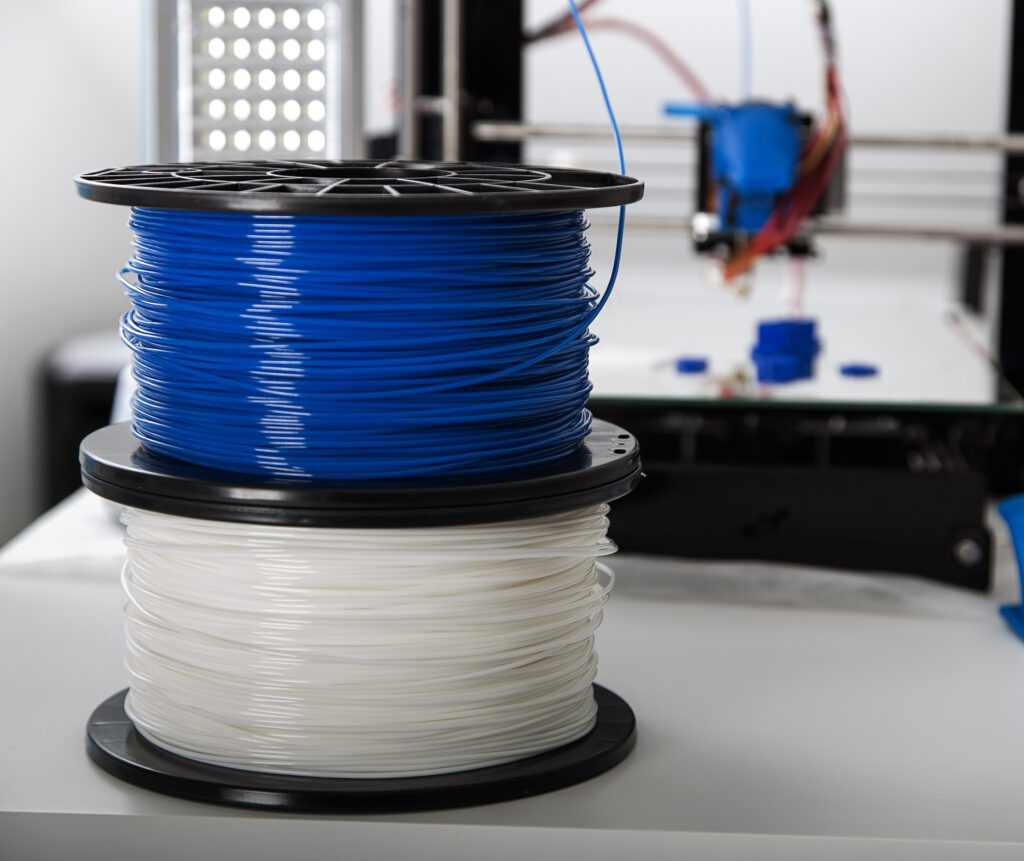
Understanding the properties and applications of various 3D printing materials is crucial for successful printing projects. This section will explore common and innovative 3D printing materials, and provide guidance on selecting the right material for specific applications.
Common 3D Printing Materials
- PLA (Polylactic Acid):
- Properties: Biodegradable thermoplastic made from renewable resources like cornstarch. Known for its low warping and ease of use.
- Benefits: Environmentally friendly, available in various colors, and has a pleasant, sweet smell when printed.
- Best Use Cases: Ideal for decorative objects, prototypes, and products that don’t require high heat resistance.
- ABS (Acrylonitrile Butadiene Styrene):
- Properties: Petroleum-based plastic known for its strength, flexibility, and higher temperature resistance.
- Benefits: Durable and suitable for post-processing (like sanding and painting).
- Best Use Cases: Functional parts, automotive components, and items requiring durability.
- PETG (Polyethylene Terephthalate Glycol):
- Properties: A variant of PET (used in water bottles), modified with glycol for enhanced printability.
- Benefits: Strong, water-resistant, and relatively flexible with minimal warping and odor.
- Best Use Cases: Mechanical parts, protective components, and objects in contact with food or liquid.
- TPU (Thermoplastic Polyurethane):
- Properties: A flexible and durable rubber-like material.
- Benefits: Highly flexible, resistant to abrasion, and can withstand impact and pressure.
- Best Use Cases: Phone cases, wearable items, and parts requiring elasticity such as gaskets and seals.
Innovative Materials
- Conductive Filaments:
- Overview: Embedded with conductive materials like carbon black or graphene.
- Applications: Used for creating circuits, sensors, and components for wearable technology.
- Metal and Wood Filaments:
- Metal Filaments: Infused with fine metallic powders, offering a metallic finish and weight.
- Wood Filaments: Contain wood fibers, producing prints with wood-like aesthetics.
- Impact: Allow for printing objects that mimic the appearance and properties of metal and wood.
- Biodegradable Options:
- Examples: PLA, PCL (Polycaprolactone), and other bioplastics.
- Impact: Offer environmentally friendly alternatives, reducing the carbon footprint of 3D printing.
Material Selection Guide
- Strength and Durability:
- Flexibility:
- TPU or other flexible filaments for parts that need to bend or stretch without breaking.
- Heat Resistance:
- ABS or specialized high-temperature filaments for objects exposed to heat.
- Aesthetics and Finish:
- PLA for a wide range of colors and a glossy finish.
- Wood or metal filaments for a natural or metallic look.
- Environmental Considerations:
- Opt for PLA or other biodegradable materials for an eco-friendly choice.
- Special Requirements:
- Conductive filaments for electronic projects.
- Glow-in-the-dark or UV-reactive filaments for unique visual effects.
Selecting the right material involves balancing the requirements of your project with the properties of various filaments. This guide should help you make informed decisions for optimal results in your 3D printing endeavors.
Post-Processing Techniques in 3D Printing
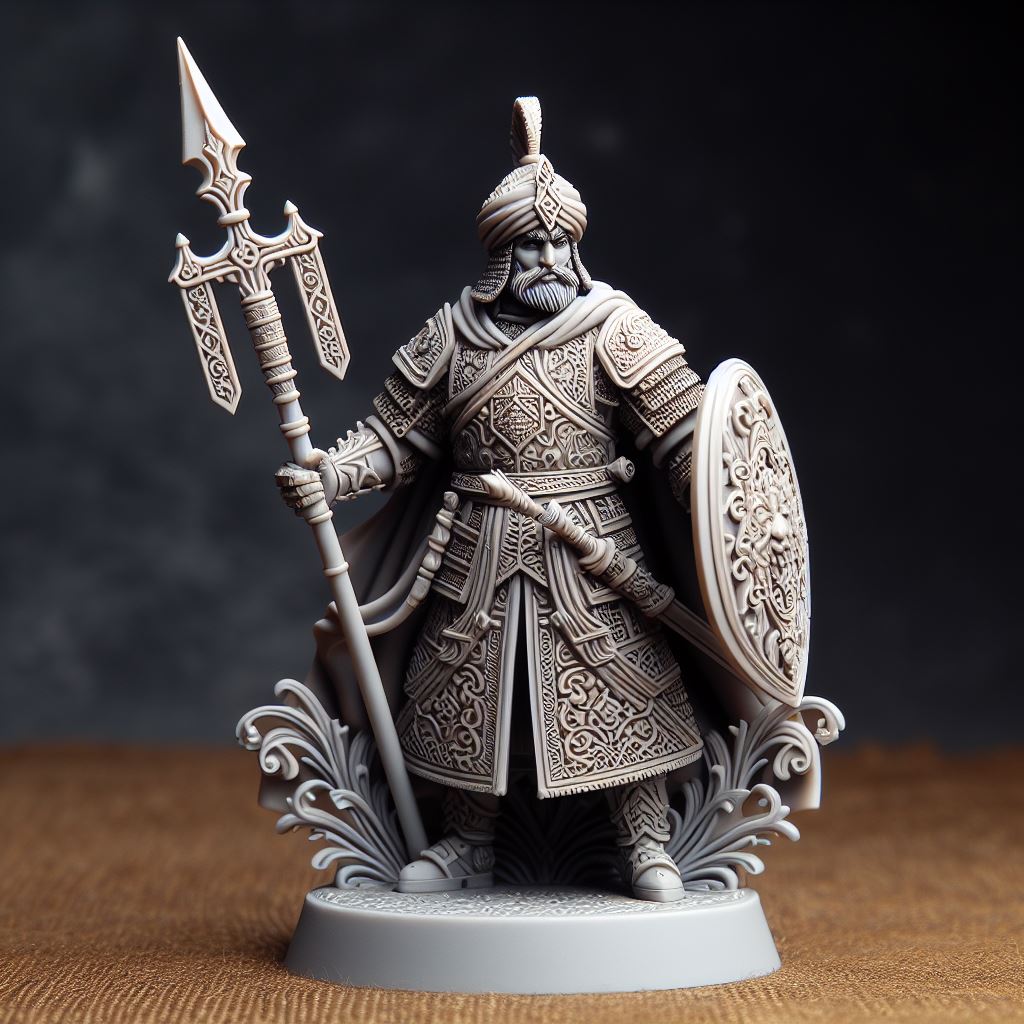
After 3D printing an object, post-processing can significantly enhance its appearance and functionality. These techniques range from basic to advanced, each suited for different materials and desired outcomes. Below, we’ll cover common finishing techniques and delve into more advanced methods, providing tips and safety advice.
Finishing Techniques
- Sanding:
- Process: Involves using various grits of sandpaper to smooth the surface of the print.
- Tips: Start with coarse sandpaper and gradually move to finer grits for a smooth finish. Sand in a circular motion for uniformity.
- Painting:
- Process: Applying paint to the surface of the print for aesthetics or protection.
- Tips: Use a primer before painting to ensure better adhesion. Acrylic paints are commonly used due to their ease of application and variety of colors.
- Sealing:
- Process: Applying a sealant to protect the print from elements like moisture or to enhance its strength.
- Tips: Use a spray sealant for an even coat. For parts requiring water resistance, consider epoxy or polyurethane-based sealants.
Advanced Techniques
- Acetone Vapor Smoothing (For ABS Prints):
- Process: Exposing ABS prints to acetone vapor to smooth out layer lines.
- Equipment Needed: An airtight container, acetone, and safety gear (gloves, goggles).
- Safety Precautions: Perform in a well-ventilated area. Acetone is flammable and toxic, so handle with care.
- UV Curing (For Resin Prints):
- Process: Exposing resin prints to UV light to harden and strengthen the object.
- Equipment Needed: A UV light source (like a UV curing chamber or sunlight).
- Safety Precautions: Wear protective gear such as gloves and eye protection to avoid exposure to uncured resin and UV light.
Additional Considerations
- Time and Patience: Post-processing can be time-consuming. Patience is key to achieving the desired finish.
- Protective Gear: Always wear protective gear, especially when dealing with chemicals or tools.
- Material-Specific Techniques: Tailor your approach based on the material. For example, PLA doesn’t react to acetone, so acetone smoothing isn’t suitable.
Through these post-processing techniques, you can transform your 3D printed objects from simple prototypes or models to finished products with a professional look and feel. Whether you’re aiming for a smooth, painted, or strengthened finish, these methods will elevate the quality of your 3D prints.
Community and Support in 3D Printing
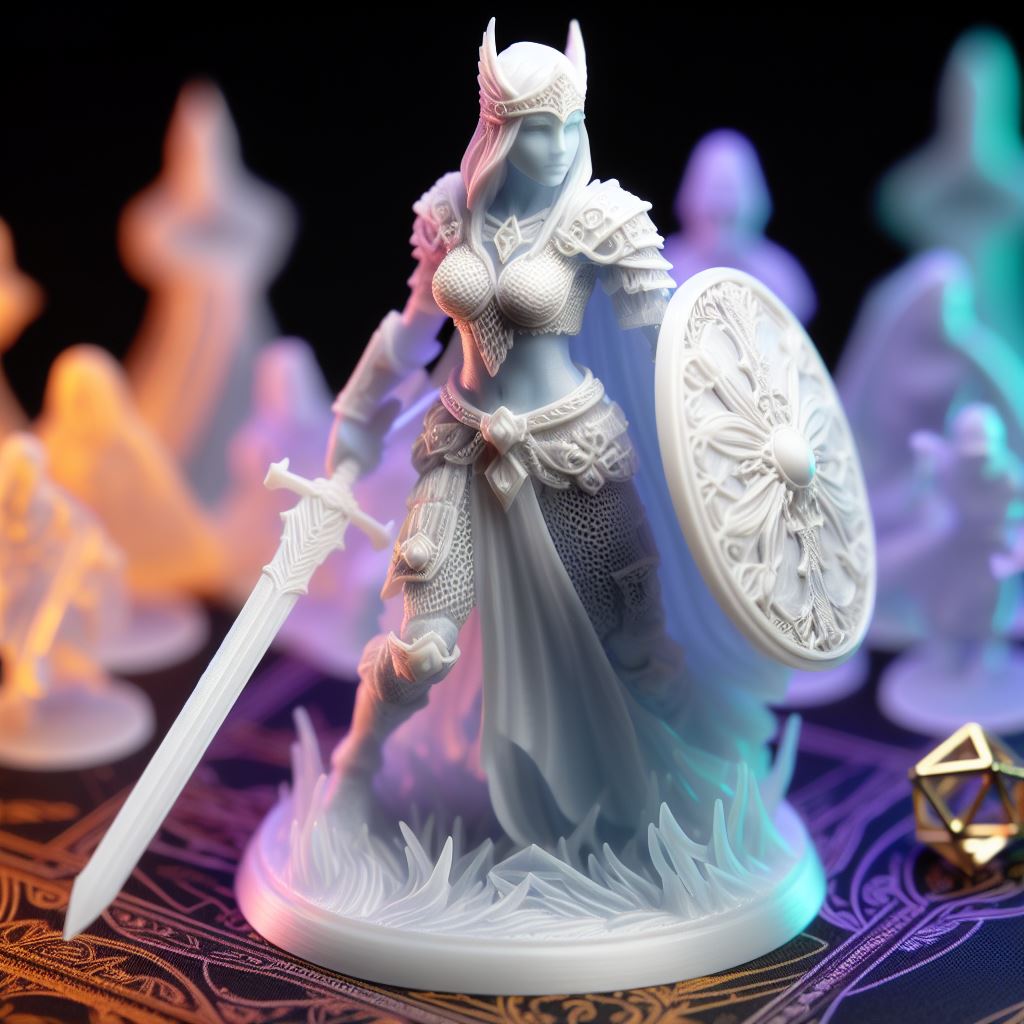
The 3D printing community is a vibrant and supportive network that offers resources, knowledge, and inspiration. Whether you’re a beginner or an experienced printer, engaging with these communities can significantly enhance your 3D printing journey. Below, we’ll explore online forums, local meetups, and resources for continuous learning.
Online Forums and Communities
- Popular Online Platforms:
- Reddit’s r/3Dprinting: A vast community where members share projects, advice, and news related to 3D printing.
- Thingiverse: Known for its extensive library of free 3D print models and a community section for discussions and tips.
- Social Media Groups: Platforms like Facebook and LinkedIn host numerous 3D printing groups for sharing experiences and advice.
- Benefits of Online Communities:
- Troubleshooting Help: Access a wealth of collective knowledge to solve printing issues.
- Inspiration: Discover innovative projects and ideas from around the world.
- Support and Advice: Engage with fellow enthusiasts for recommendations on printers, materials, and techniques.
Local Meetups and Workshops
- Connecting with Local Groups:
- Search for local 3D printing groups or maker spaces in your area.
- Websites like Meetup.com often list relevant gatherings and events.
- Benefits of Physical Meetups:
- Hands-On Experience: Opportunities to see different 3D printers in action and learn practical skills.
- Networking: Connect with local enthusiasts and professionals for collaboration and support.
- Community Projects: Participate in group projects or local maker fairs to showcase your skills and learn from others.
Resources for Continuous Learning
- Online Courses and Tutorials:
- Platforms like Udemy, Coursera, and Skillshare offer courses ranging from basic 3D printing to advanced techniques.
- YouTube channels like Maker’s Muse, 3D Printing Nerd, and Thomas Sanladerer provide tutorials, reviews, and tips.
- Recommended Books and Magazines:
- Books like “The 3D Printing Handbook” by 3D Hubs and “3D Printing for Dummies” offer comprehensive insights.
- Magazines such as “All3DP” and “Make: Magazine” keep you updated on the latest trends and technologies.
- Continuous Skill Development:
- Stay updated with new software, materials, and printing techniques.
- Engage in community challenges or projects to apply and enhance your skills.
The 3D printing community is a dynamic and ever-evolving space, rich with knowledge and enthusiasm. By tapping into these resources, you can stay at the forefront of 3D printing innovations, continually grow your skills, and enjoy the camaraderie of fellow 3D printing enthusiasts.
Conclusion
Congratulations! You’ve taken your first steps into the mesmerizing world of 3D printing. Embrace the power of a 3D printer, and let your creativity flourish. Whether you’re an entrepreneur, hobbyist, or student, 3D printing offers a wealth of opportunities to explore and innovate. So, fire up your 3D printer, unleash your imagination, and watch your ideas materialize into reality!
FAQs
- Is 3D printing expensive?
While initial investment costs for a 3D printer can vary, the long-term benefits often outweigh the expenses, especially when compared to traditional manufacturing methods. - What materials can I use for 3D printing?
Common materials include PLA, ABS, PETG, and TPU, each with unique properties suited for different applications. - Is 3D printing complicated for beginners?
While there’s a learning curve, many entry-level 3D printers are user-friendly, and there are numerous online resources and communities to support beginners. - How long does it take to 3D print an object?
Print times vary depending on the complexity and size of the object, ranging from minutes to several hours. - Can I sell 3D printed items?
Yes, you can sell your 3D printed creations, but it’s essential to respect copyright and intellectual property laws.
Remember, the key to successful 3D printing lies in exploring and experimenting. So, dream big, create, and have a blast on your 3D printing journey!
Resources
- https://www.printables.com/search/models?q=pet
- https://www.thingiverse.com/search?q=cosplay&page=1
- https://www.blender.org/
- https://www.tinkercad.com/
- https://www.autodesk.com/products/fusion-360/personal

